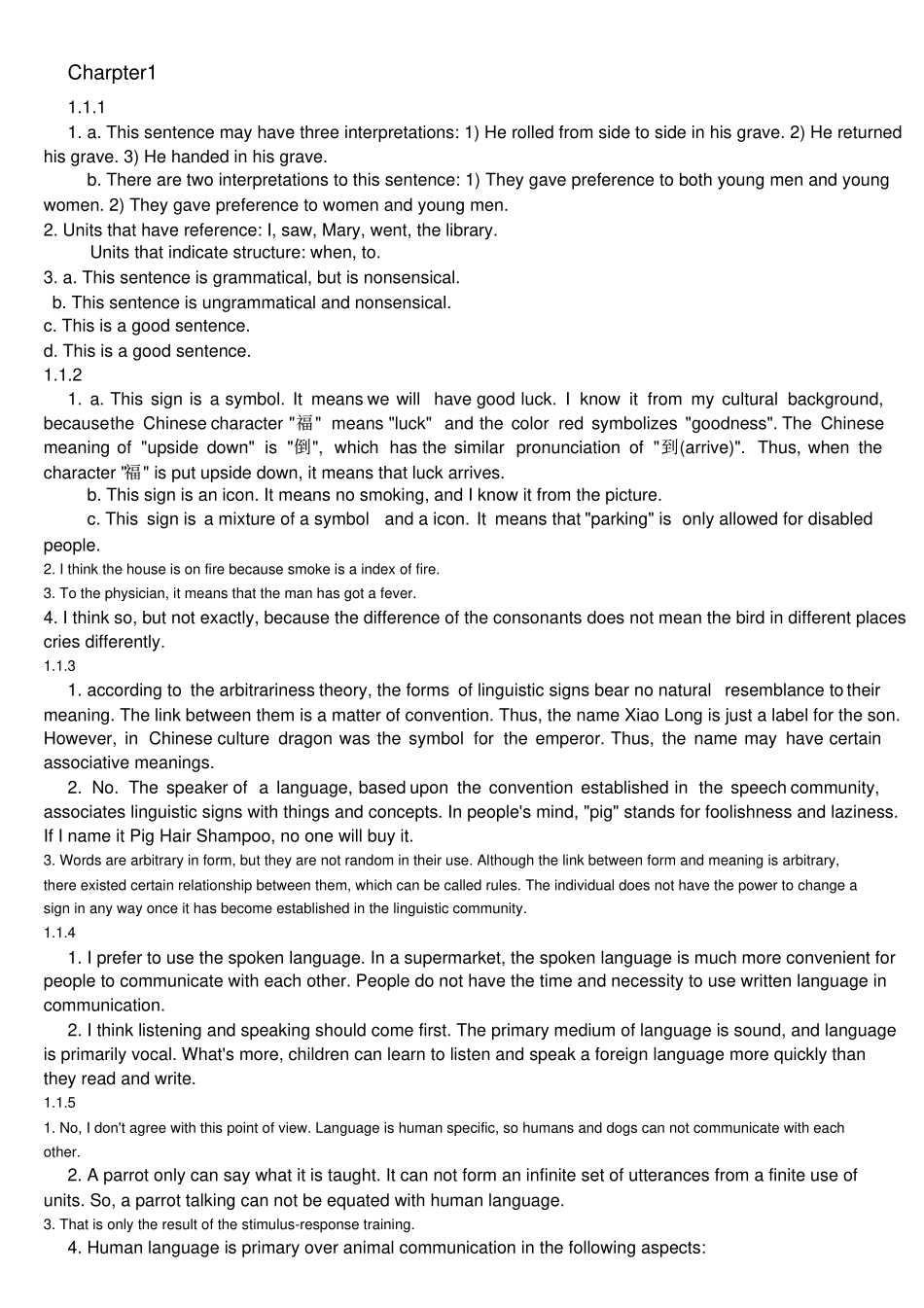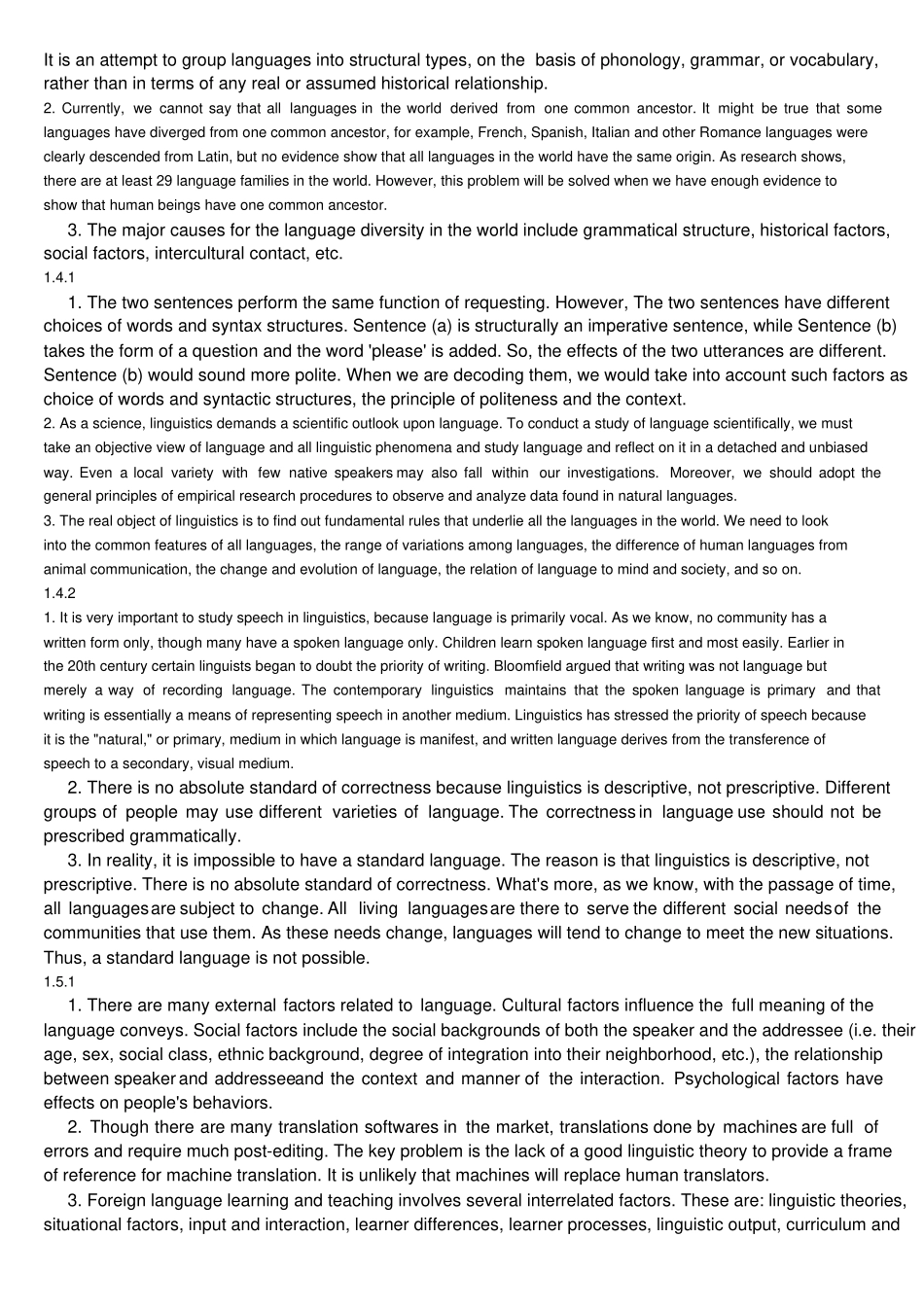Charpter1 1.1.1 1. a. This sentence may have three interpretations: 1) He rolled from side to side in his grave. 2) He returned his grave. 3) He handed in his grave. b. There are two interpretations to this sentence: 1) They gave preference to both young men and young women. 2) They gave preference to women and young men. 2. Units that have reference: I, saw, Mary, went, the library. Units that indicate structure: when, to. 3. a. This sentence is grammatical, but is nonsensical. b. This sentence is ungrammatical and nonsensical. c. This is a good sentence. d. This is a good sentence. 1.1.2 1. a. This sign is a symbol. It means we will have good luck. I know it from my cultural background, because the Chinese character "福" means "luck" and the color red symbolizes "goodness". The Chinese meaning of "upside down" is "倒", which has the similar pronunciation of "到(arrive)". Thus, when the character "福" is put upside down, it means that luck arrives. b. This sign is an icon. It means no smoking, and I know it from the picture. c. This sign is a mixture of a symbol and a icon. It means that "parking" is only allowed for disabled people. 2. I think the house is on fire because smoke is a index of fire. 3. To the physician, it means that the man has got a fever. 4. I think so, but not exactly, because the difference of the consonants does not mean the bird in different places cries differently. 1.1.3 1. according to the arbitrariness theory, the forms of linguistic signs bear no natural resemblance to their meaning. The link between them is a matter of convention. Thus, the name Xiao Long is just a label for the son. However, in Chinese culture dragon was the symbol ...


